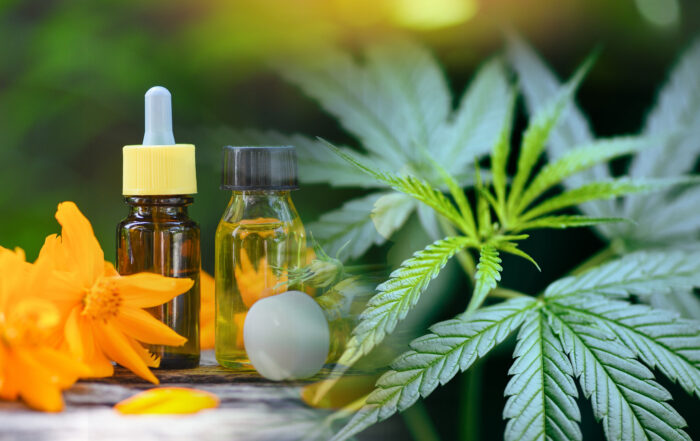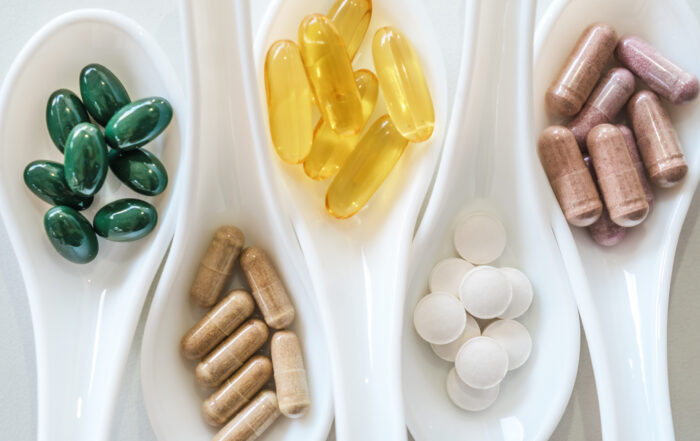
Technical Project Lead (TPL) Reviews by the FDA Center for Tobacco Products Are Key to Improving Science and Public Health Communication
By Jim Solyst
One of the most challenging decisions facing the FDA Center for Tobacco Products (CTP) is determining whether allowing a nicotine product to enter or stay on the market is beneficial to the public health. The “appropriate for the protection of the public health” standard is the central component of the Section 910 Premarket Tobacco Application (PMTA)[1] and Section 911 Modified Risk Tobacco Application (MRTP)[2] provisions of the Family Smoking Prevention and Tobacco Control Act (Tobacco Control Act).
This amorphous yet well-meaning standard has received considerable attention from product applicants as well as the public health and academic research communities and other stakeholders. Interested parties looking for a definition of beneficial to the public health can scrutinize the Tobacco Control Act, FDA guidance documents, and the CTP website and still not find clarification that is applicable to their needs.
Although a one-definition-fits-all-needs may not exist, there are existing examples, and there soon will be more, of how the standard is applied to product-specific decisions. The vehicle used by CTP for documenting how and why a product meets the standard is the Technical Project Lead (TPL) review report. The prominence of the TPL as a science and public health communication tool will increase considerably in the coming months as FDA makes decisions on controversial products and addresses related challenging issues.
A case can be made that the holy trinity of the U.S. tobacco regulatory process are the statute; guidance issued by FDA, such as the recently (October 2021) issued final rules providing additional information on the requirements for future Premarket Tobacco Product Applications and Substantial Equivalence Reports[3]; and the product marketing decisions described in TPL reports. TPLs have not received as much attention as the statute or guidance documents, but it is the most direct and specific mechanism used by the Center for Tobacco Products (CTP) to communicate marketing decisions, and what is meant by being beneficial to the public health.
A TPL is typically more than just a product-specific decision document: it can set a precedent for decisions to follow and thereby impact the future direction of FDA decision-making. Thus, it is essential reading to all stakeholders—including science journalists—who must communicate why a specific product is allowed on the market, and what that decision means to the U.S. tobacco and nicotine product market in general.
Be aware, a TPL is not a reader-friendly document. It does not provide good quotes and may prove overwhelming for the occasional researcher or journalist on deadline. This is because a TPL is not intended for a broad audience; rather, it is the formal document of record for a product decision and is carefully written and undoubtedly closely reviewed by FDA lawyers.
There will always be criticism of CTP product decisions, and TPLs will be disparaged for the scientific judgement presented. But it is undeniably a credible document issued by a premier national public health agency and should serve as the foundation for scientific and policy discussions. For example, U.S. state and local authorities considering action on a PMTA or MRTP product should start their science-based due diligence with an examination of the relevant TPL. Regulatory agencies in other countries must make decisions based on their own statutory authorities, but they likely will also find TPLs of use.
Academic and public health institutions that conduct studies on nicotine products or provide advice to stakeholders will likely also find TPLs useful. For example, FDA and the National Institutes of Health (NIH) have provided grants to several Tobacco Centers of Regulatory Science (TCORS) to support research to inform the regulation of tobacco products and serve as center of excellence.[4] In addition, some state universities provide technical and legal assistance to state and local health officials, legislators, and organizations working in tobacco control. These organizations can learn from and reference TPLs when assessing or providing advice on specific products.
This article will likely be out of date at this time next year because FDA has only begun to issue PMTA marketing orders for deemed products such as Electronic Nicotine Delivery Systems (ENDS) and modern oral products such as tobacco-free nicotine pouches. So, the intention of the article is to provide background on the content of TPLs to date and prepare stakeholders to better understand and utilize future TPLs.
Status of PMTAs (as of November 2021)
PMTAs issued by FDA fall into two categories: those granted before September 2021 and deeming products, which started to be issued in September 2021. The first category consisted of three very different products:
- Swedish Match General Snus products granted in 2015[5];
- Philip Morris International (PMI) IQOS/Marlboro Stick products granted in 2019 (the IQOS System and Charger was granted in 2020)[6]; and
- 22nd Century Group Moonlight very low nicotine cigarettes in 2019.[7]
At the time of this article being published, the following ENDS and modern oral products had been granted PMTAs:
- J. Reynolds Vapor Company Vuse ENDS products;[8] and
- S. Smokeless Tobacco Company Verve pouched products (Chews and Discs in Blue and Green Mint flavors).[9]
The TPL Scientific Review Process
A subsection titled “Disciplines Reviewed” makes an early appearance in every TPL document. It is easily overlooked but highly significant because it illustrates the scientific peer review process that has been undertaken. Fifteen disciplines/offices are listed, including:
- Engineering
- Chemistry
- Microbiology
- Toxicology
- Behavioral & Clinical
- Pharmacology
- Medical
- Epidemiology
- Social Science
- Environmental Science
- Statistics
This list suggests some fundamental elements of the CTP regulatory review process; most notably that the CTP Office of Science is a comprehensive program uniquely capable of critically reviewing a range of scientific evidence. This is not to suggest that CTP decisions are beyond reproach or that politics do not affect a decision, but it does mean that a credible scientific review infrastructure has been established. Disgruntled stakeholders—for example, applicants denied a marketing order or tobacco control groups opposed to new products in general—have the right and at times perhaps the scientific justification for questioning a decision, and they can do so with the knowledge that their challenge will be considered by a staff of scientists.
The CTP product review process is unique because no other political jurisdiction has the statutory authorization—and accompanying funding mechanism—to establish such a comprehensive program. Many political jurisdictions have an interest in regulating tobacco and nicotine products, but none have scientific resources near the level of CTP. For example, state and local jurisdictions certainly have the right, and often compelling local reasons to regulate products, but ideally, they will take advantage of the scientific information provided in a TPL when making decisions.
There is a need for such a robust CTP science infrastructure because applicants, consistent with CTP guidance, must submit an abundance of evidence. PMTA guidance has evolved with each iteration benefiting from and expanding upon previous versions. But from the beginning it was clear that an applicant was expected to submit substantial information and that CTP would have to have the infrastructure necessary to review the evidence.
The essential point to be made is that the PMTA review process is an excellent example of regulatory science, which FDA has defined as “the science of developing new tools, standards, and approaches to assess the safety, efficacy, quality, and performance of all FDA-regulated products.”[10] The success of a regulatory science approach is ultimately dependent upon the submittal of credible and robust evidence and the existence of an agency program to thoroughly assess and act upon the evidence.
The Basics
In presenting the justification for granting a marketing order, a TPL starts with two basic concerns: whether the applicant demonstrated the product is manufactured in a proper manner and whether the product is low in Harmful and Potentially Harmful Constituents (HPHCs).
Manufacturing Process
The pattern of citing manufacturing processes was established in the first PMTA TPL in 2015 for eight Swedish Match General Snus products. The first bulleted point presented in the Executive Summary is the finding that the products are “[p]roduced with a voluntary, proprietary standard using acceptable manufacturing processes” and that the quality standard “was developed to ensure product quality.”[11] Similar language is presented in the 2020 TPL for the 22nd Century very low nicotine products: “Scientific review of these applications has demonstrated . . . [t]here is sufficient information to characterize the product composition and design.” And that “[t]here are adequate process controls and quality assurance procedures to help ensure VLN™ cigarettes are manufactured consistently to meet the applicant’s specifications.”[12]
More recently, the Vuse TPL states, “FDA’s evaluation of these premarket tobacco product applications (PMTAs) determined that there are adequate process controls and quality assurance procedures to help ensure both the device and e-liquids are manufactured consistently.”[13] Similarly, the Verve TPL Executive Summary states: “There are adequate process controls and quality assurance procedures to help ensure that the VERVE® products are manufactured consistently to meet the applicant’s specifications.”[14]
HPHCs
The second paragraph of the first bulleted point presented in the General Snus TPL Executive Summary is the finding that “[t]he proposed products contain significantly lower levels of NNN and NNK compared to over 97% [of] the ST products currently on the US market.” The second bulleted point elaborates, stating that “[l]evels of other harmful and potentially harmful constituents (HPHC) (including As, Cd, acetaldehyde, crotonaldehyde, formaldehyde, and BaP) are similar to or lower than levels of ST products currently on the US market.”[15]
The importance of low HPHCs is also highlighted early in the Verve products TPL: “Based on the ingredients and the HPHCs in the VERVE® products, the toxicological potential is reduced in comparison to cigarettes and smokeless tobacco.”[16]
Flavors and Youth Appeal
While proven production methods and low HPHCs are the basics, the more alluring and newsworthy considerations relate to flavors and appeal to youth. Until additional PMTAs are granted and there is an adequate sample size, it is difficult to determine how TPLs signal CTP policy. However, there does seem to be some consistency in the TPLs for two somewhat similar oral products: Swedish Match General Snus and the U.S. Smokeless Tobacco Company Verve pouched products.
The 2015 General Snus TPL includes the following paragraph:
“The proposed products are reported to have flavors such as mint, wintergreen, or tobacco character with citrus. While flavored smokeless tobacco products are a potential concern of youth initiation, these proposed flavors are consistent with traditionally available ST flavors and are not novel flavors that likely increase appeal to youth. Overall uptake of snus products including among youth in the US is low even with such flavors available in currently marketed products and unexpected to dramatically increase with the marketing of the PMTA products at this time. Postmarket data describing sales of these proposed snus products may be informative in better understanding appeal and use of newly marketed flavored products.”[17]
CTP positions on flavors and youth appeal have evolved considerably since 2015; however, the 2021 TPL Executive Summary for the Verve mint flavored products include the following paragraph that is consistent with the General Snus TPL language:
“In terms of youth risk, the information extrapolating dissolvable tobacco products to VERVE® from the literature and from national survey data support that there is low likelihood of youth initiating tobacco use with the new products. Nonetheless, given the strong evidence regarding the impact of youth marketing exposure to youth appeal and initiation of tobacco use, a marketing authorization should include postmarket requirements to help ensure that youth exposure to tobacco marketing is limited.”[18]
TPL Limitations
PMTAs are not made publicly available, so there are limits on how detailed a TPL can be in describing an applicant-submitted study. Based on the initial deeming TPLs, consumer perception and usage studies will be critical in determining whether a product is appealing to youth. For example, a reason cited for granting the Vuse Solos products TPL was:
“In the applicant’s analysis, among all user groups (current established cigarette users, current established non-cigarette tobacco users, former tobacco users, and never tobacco users), current established cigarette users indicated the highest intentions to purchase Vuse Solo products, and the most preferred flavor among these individuals was the tobacco (original) flavor compared to non-tobacco flavors (e.g., mint, nectar, and tropical). Therefore, the applicant has demonstrated that current adult smokers are particularly interested in the new products to assist in intended switching, and these products have the potential to benefit that group as compared to continued exclusive cigarette use.”[19]
This paragraph elicits some crucial questions, such as how much more interested were adult smokers in the tobacco flavored product than the other flavored products (which were denied a PMTA)? Stakeholders, particularly independent researchers, would undoubtedly find it useful to examine the studies cited in the TPL.
Public availability of PMTA studies will depend on the applicant taking extraordinary measures. Seemingly the best approach is to publish the studies, or at least the key findings, in a credible scientific journal. But there are complications with that approach, starting with the limited number of journals willing to publish industry-funded studies. It could be easier to be published if the article authors were not employed by the applicant, but that would require a willingness of independent researchers to have an interactive relationship with tobacco and nicotine companies.
Conclusion
A TPL is a decision document that provides a science-based justification for allowing a product on the market. It also contributes to the understanding of what is meant by being beneficial to the public health. Although its contribution to regulatory science has been significant, it hasn’t received a great deal of attention to date. But that will likely change as more innovative nicotine products are granted market authorization.
It remains to be seen whether, as is hoped, the TPL process and will become THE source of information on products. For example, will state and local authorities considering action on a product rely upon the conclusion and supporting evidence presented in a TPL? And will regulatory and public health agencies worldwide recognize the TPL documents as an indispensable source of information?
[1] Section 910 Tobacco Control Act. https://www.fda.gov/tobacco-products/rules-regulations-and-guidance/family-smoking-prevention-and-tobacco-control-act-overview.
[2] Section 911 Tobacco Control Act. https://www.fda.gov/tobacco-products/rules-regulations-and-guidance/family-smoking-prevention-and-tobacco-control-act-overview.
[3] Premarket Tobacco Product Applications and Substantial Equivalence Reports. https://www.fda.gov/tobacco-products/ctp-newsroom/perspective-fdas-progress-tobacco-product-application-review-and-related-enforcement.
[4] Tobacco Centers of Regulatory Science (TCORS). https://www.fda.gov/tobacco-products/research/tobacco-centers-regulatory-science-tcors.
[5] General Snus Technical Project Lead Review. https://www.fda.gov/media/94582/download.
[6] IQOS Technical Project Lead Review. https://www.fda.gov/media/124247/download.
[7] 22nd Century Technical Project Lead Review. https://www.fda.gov/media/133633/download.
[8] Vuse Technical Project Lead Review. https://www.fda.gov/media/153017/download.
[9] Verve Technical Project Lead review. https://www.fda.gov/media/153255/download.
[10] Advancing Regulatory Science at FDA: Focus Areas of Regulatory Science. https://www.fda.gov/science-research/science-and-research-special-topics/advancing-regulatory-science.
[11] General Snus TPL, supra note 5.
[12] 22nd Century TPL, supra note 7.
[13] Vuse TPL, supra note 8.
[14] Verve TPL, supra note 9.
[15] General Snus TPL, supra note 5.
[16] Verve TPL, supra note 9.
[17] General Snus TPL, supra note 5.
[18] Verve TPL, supra note 9.
[19] Vuse TPL, supra note 8.
Update Magazine
Winter 2021

 JIM SOLYST heads JMS Scientific Engagement, providing private sector clients guidance for understanding and engaging in the regulatory science process.
JIM SOLYST heads JMS Scientific Engagement, providing private sector clients guidance for understanding and engaging in the regulatory science process.



